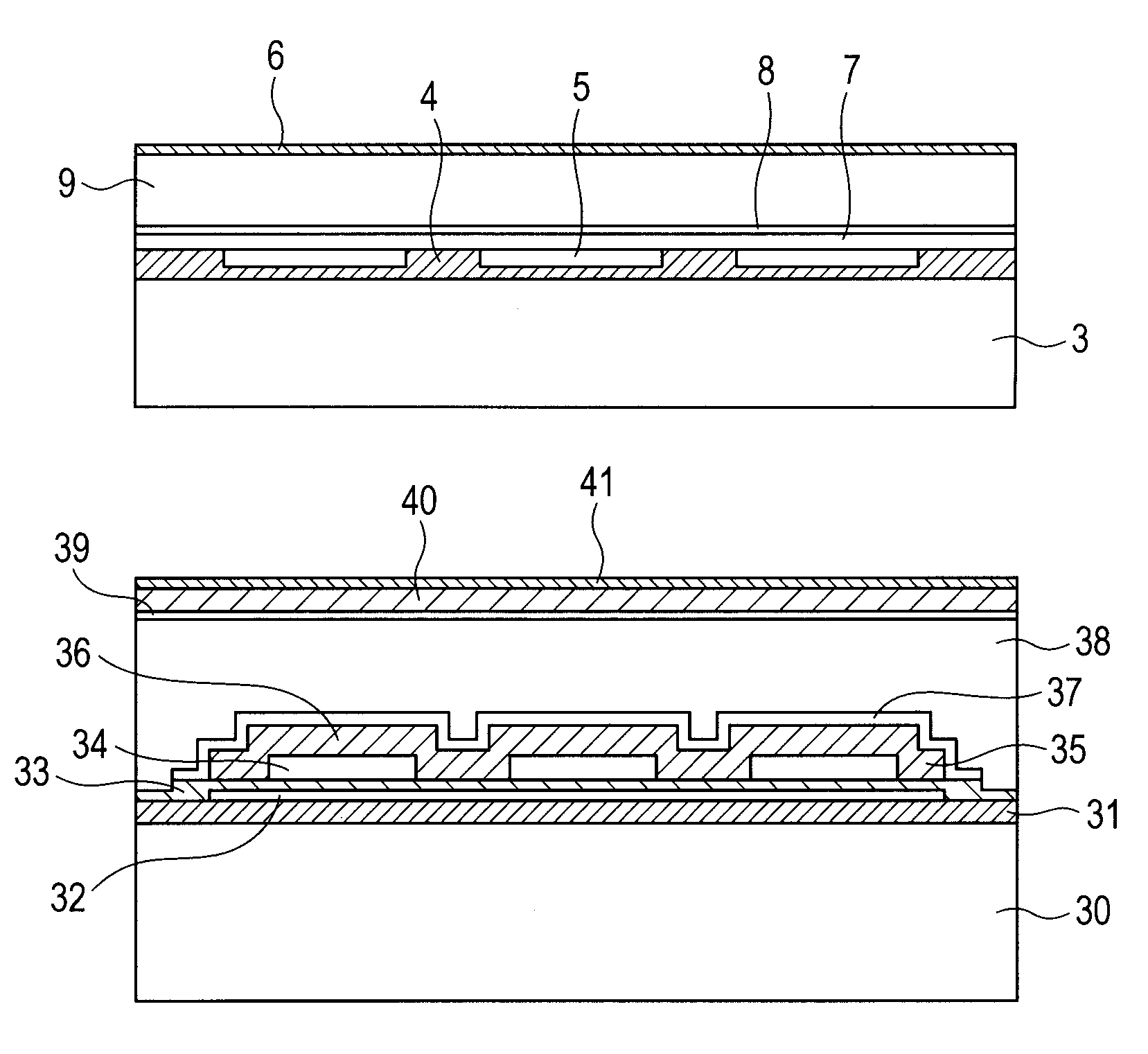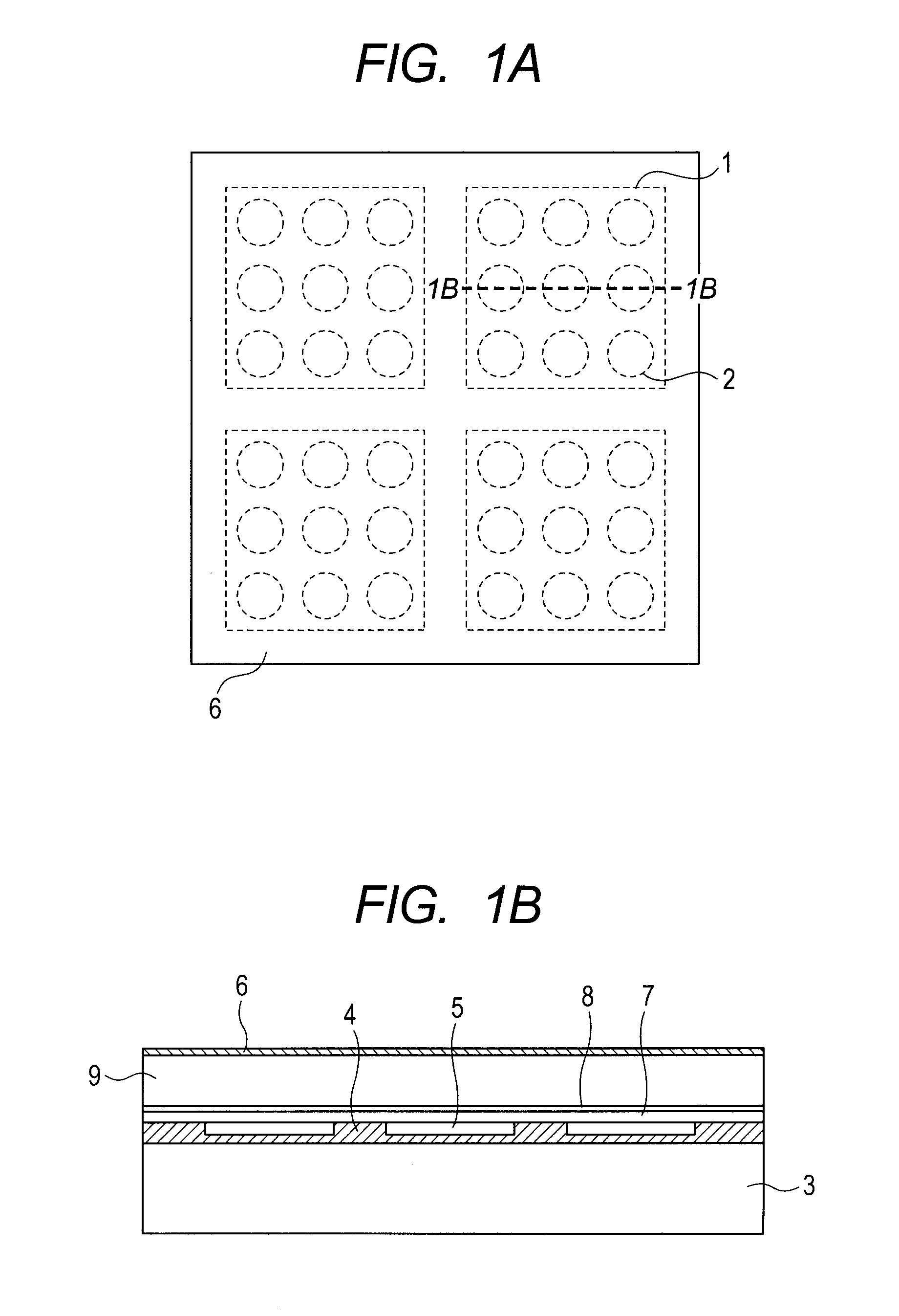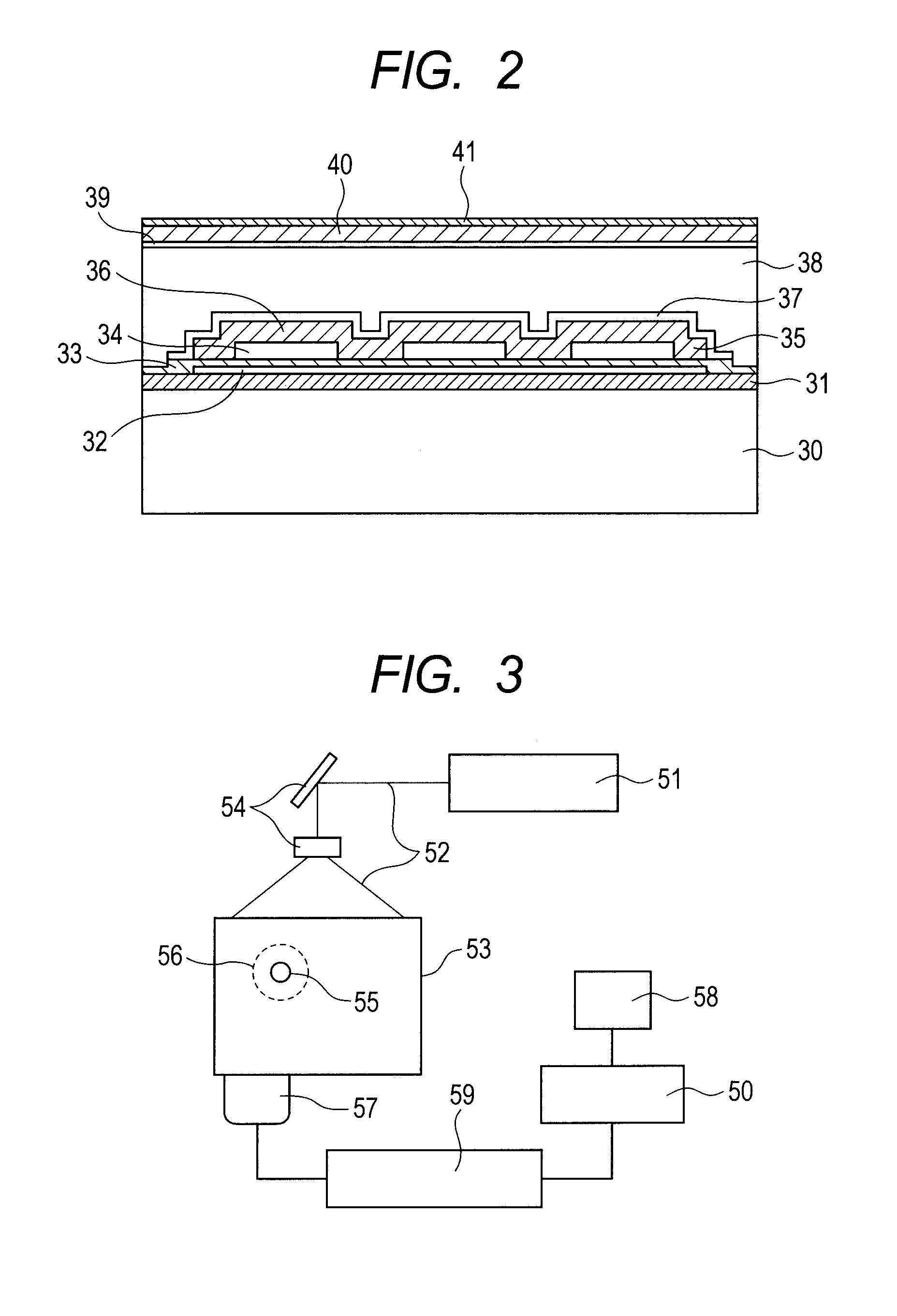Electromechanical transducer and photoacoustic apparatus
a transducer and photoacoustic technology, applied in the field of electromechanical transducers, to achieve the effect of reducing the band width and preventing the degradation and dispersion of sensitivity
- Summary
- Abstract
- Description
- Claims
- Application Information
AI Technical Summary
Benefits of technology
Problems solved by technology
Method used
Image
Examples
exemplary embodiment 1
[0024]The structure of the capacitance type electromechanical transducer of Exemplary Embodiment 1 will be described below with reference to FIG. 1A and FIG. 1B. The electromechanical transducer of the present exemplary embodiment has a plurality of elements 1 therein. Although only four elements 1 are provided in FIG. 1A and FIG. 1B, the number of the elements may be any number.
[0025]A cell 2 includes a vibration film 7 of single-crystal silicon having a thickness of 1 μm, a space 5, a vibration film supporting portion 4 which supports the vibration film 7 of the single-crystal silicon having a resistivity of 0.01 Ωcm, and a silicon substrate 3. The silicon substrate 3 has a thickness of 300 μm and a resistivity of 0.01 Ωcm. The shape of the vibration film 7 of the present exemplary embodiment is a circle with a diameter of 30 μm, which may also be a quadrangle, a hexagon or the like. The vibration film 7 of the single-crystal silicon is mainly formed of single-crystal silicon, and...
exemplary embodiment 2
[0028]The structure of the capacitance type electromechanical transducer of Exemplary Embodiment 2 will be described below with reference to FIG. 2. The electromechanical transducer of Exemplary Embodiment 2 has an approximately similar structure to that of Exemplary Embodiment 1. The cell includes an upper electrode 37, a vibration film 36 with a thickness of 1 μm, a space 34, a vibration film supporting portion 35 which supports the vibration film 36, an insulation membrane 33, a lower electrode 32 and a substrate 30. The substrate 30 is a silicon substrate, the vibration film 36 and the vibration film supporting portion 35 are a silicon nitride film, and the upper electrode 37 and the lower electrode 32 are aluminum. An oxide film 31 is arranged between the substrate 30 and the lower electrode 32, and it insulates both of them from each other. When the substrate 30 is a low-resistance silicon substrate or an insulating substrate made from glass or the like, the oxide film 31 need...
exemplary embodiment 3
[0033]The electromechanical transducer in each of the above described exemplary embodiments can be used for a photoacoustic apparatus using a photoacoustic imaging technology. The photoacoustic imaging technology is a technology of: firstly irradiating a subject with a pulse light; making an optical absorber absorb the energy of the light which has propagated / diffused in the subject; thereby receiving the generated acoustic wave; and imaging the information in the inner part of the subject by using the received signal for this acoustic wave. Consequently, the photoacoustic apparatus can obtain the information on the profile of optical properties such as the profile of initial pressure generation and the profile of light absorption coefficient in the subject as an image data.
[0034]FIG. 3 illustrates a schematic view of a photoacoustic apparatus to which the present invention can be applied. The photoacoustic apparatus according to the present invention has at least a light source 51,...
PUM
 Login to View More
Login to View More Abstract
Description
Claims
Application Information
 Login to View More
Login to View More - R&D
- Intellectual Property
- Life Sciences
- Materials
- Tech Scout
- Unparalleled Data Quality
- Higher Quality Content
- 60% Fewer Hallucinations
Browse by: Latest US Patents, China's latest patents, Technical Efficacy Thesaurus, Application Domain, Technology Topic, Popular Technical Reports.
© 2025 PatSnap. All rights reserved.Legal|Privacy policy|Modern Slavery Act Transparency Statement|Sitemap|About US| Contact US: help@patsnap.com



